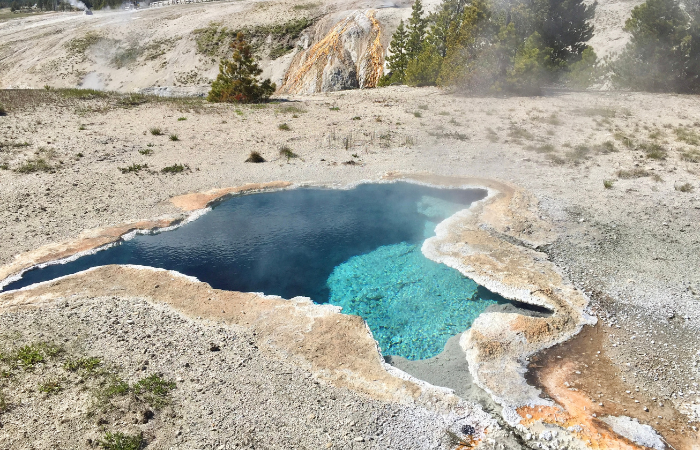History of ZZ Top

Like the state of Texas, where they come from, ZZ Top combines rural primitivism and urban image in a way that has led to a perfect synthesis between provincial rock’n’roll and high technology.
When, in the late 1980s, Forbes magazine published the list of celebrities in the entertainment world with the highest profits worldwide, only one rock group, U2, ranked above ZZ Top among those who had amassed greater fortunes. However, they have managed to stay curiously away from the rock’n’roll high society circus, and remain immune to the “rock messiah” syndrome that generally haunts other artists of their stature. In almost thirty years they have traveled the whole planet with their tours, although they have never been away for a long time from their base in southern North America, and the description someone made of them when they started, “that little old band from Texas”, even today they fit like a glove.
Billy Gibbons, who was a graphic arts student, began playing the guitar in The Moving Sidewalks, a psychedelic “garage” band from the 1960s whose debut single, “99th Floor,” ranked highest on the charts. Texas lists for five weeks in 1967. Dusty Hill and Frank Beard, meanwhile, graduated from The American Blues, a Dallas band best known for the fact that its members wore their hair dyed blue than anything else. The three met in 1970 and the pact they then sealed has withstood the test of time with an overwhelming solidity. Except for the brief contribution of a guitar accompaniment on the part of a stranger on one of his first albums, the three men have self-supplied up to the last note and the last rhythm of those that have been included in their albums, even if they have had even that to learn to play the saxophone or to execute a section of three metals, as is the case in some songs of their album Degüello. They have never enriched their live performances with extra musicians, nor have they recorded or played with other bands.
Their manager and producer since the first day has been Bill Ham, a non-conformist Texan with a management style very similar to Led Zeppelin’s first manager, Peter Grant. Ham categorically separated ZZ Top from television throughout the 1970s, preferring the band’s live performances to other procedures that guaranteed easier success. Although such principles had to be hard by force, the truth is that the foundations of the band were already unbreakable towards 1976, when it took place the tour Taking Texas to the People, an ambitious production that had them a lot of time on the road along with all their outdoor life equipment and a large fauna (an ox, a buffalo weighing 2,000 pounds, half a dozen vultures, two rattlesnakes six feet each, a pig and a wolf). Their aversion to TV was softened in the eighties, when they became peculiar stars of MTV thanks to a trilogy of videos directed by Tim Newman for the tracks “Gimme All Your Lovin”, “Sharp Dressed Man” and “Legs”, all of them included in his successful 1983 album, Eliminator.
Presenting themselves since the eighties as the “rock mausoleums”, ZZ Top is the only group that has seriously faced the commitment to age in a market, the rock’n’roll, which always trades with the currency of youth. To such capacity of permanence has contributed, without a doubt, the image that Gibbons and Hill conceived for the group when their members barely reached the thirty years of age, an image in which the most outstanding note are long beards that were not fashionable since the times of the Old Testament. This strategy freed them of concerns from then on, since, unless they dramatically increase in weight, they will not look older in twenty years than they appear now.
Given the enormous amount of works published by this band throughout its history, only those that have been most relevant are mentioned. The first is a LP of 1973 entitled Tres hombres, which made number three of its production at that time. Some people think that this has been the best album of his career. The tracks that open the album, “Waitin ‘for the Bus” and “Jesus Just Left Chicago,” are two of the great opening salvoes of all time, along with “Route 66,” from the Rolling Stones’ first album, and “Whole Lotta Love” by Led Zeppelin II. In fact, the two inseparable songs continued being an essential component in the set of the subjects that touched in direct on the occasion of the tour of 1991, Recycler.Another interesting cut is “La Grange”, a lascivious tale set in a brothel that was a minor success in the United States, as well as “Precious and Grace” and the surrealist “Master of Sparks”, whose unconventional lyrics are adorned with a somewhat questionable Texan folklore. Although Tres Hombres reached number eight in the American charts, it was never recorded in the British, and is one of the most ignored great albums in the history of rock.
Another of the great works of ZZ Top is Degüello, published in 1979. It is a new collection of apparently casual brilliance, which illuminates, among other things, the consummate control of the textures of Gibbons guitar. It oscillates between the perfect Fender sound of “A Fool for Your Stockings” and the Marshall sound of “Cheap Sunglasses”. Half a decade before Michael Jackson and LL Cool J entered the scene, the ZZ Top demonstrated a perfect familiarity with the street language in “I’m Bad, I’m Nationwide.” The band’s fascination with car racing is also revealed through another of those surreal fantasy lyrics, “Manic Mechanic,” sung by Gibbons as if he were speaking through a broken megaphone. Dazzling versions of “I Thank You”, by Isaac Hayes, and “Dust My Broom”, by Elmore James, culminate a spectacularly rich composition.
When someone asked Gibbons what a guitarist could do to improve his technique, his response was to go out and buy an album called The Sound of the Drags (a recording that picked up the peculiar sound of car racing), and I absorbed all the warm feeling it emitted. The success of Eliminator, album released in 1983, is based precisely on having managed to capture that “warm feeling”; So much so, that the LP has become part of the legendary history of rock’n’roll, along with the car, the girls, the videos and the ten million copies that were sold of it. The trick they discovered was simple, but surprisingly effective. They trumpeted the guitar sound, made the choirs more dynamic and banished any kind of rhythmic overcrowding. Contrary to what is common in a heavy rock album, “Gimme All Your Lovin,” “Got Me Under Pressure,” “Sharp Dressed Man,” “Legs,” “Dirty Dog,” and “If I Could Only Flag Her Down “are held exclusively on a basic battery pulse.
In addition to Afterburner (1985), which was number two in the United Kingdom, two compilation albums of the band must also be mentioned: The Best of ZZ Top (1977) and Greatest Hits (1992), compilations that only share two themes, ” Tush”and” La Grange “, which gives a good account of the group’s creativity. The Best of ZZ Top collects an acceptable selection of the band’s work until 1977, paying special attention to Tres Hombres (which contributes four songs out of a total of ten). Greatest Hits, which was catapulted to singles charts for its version of the song “Viva Las Vegas”, shows the most modern and commercial face of ZZ Top.However, there are several notable omissions (“TV Dinners”, “Velcro Fly”, “Stages”) and other rather questionable inclusions (“Gun Love”, “Give It Up”) that make this, according to some, a summary of little confidence.







